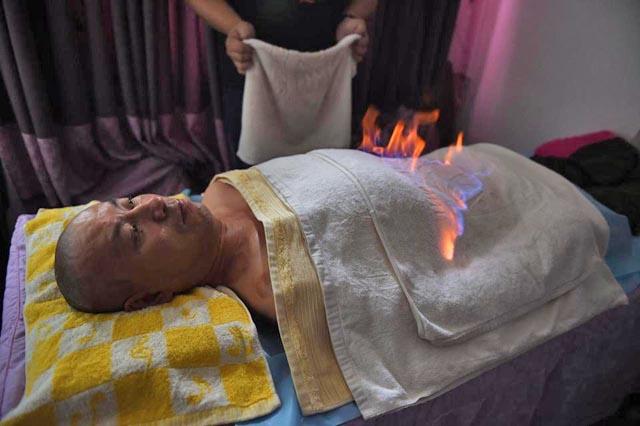You are here
Your imagination could help conquer your fears
By Reuters - Nov 22,2018 - Last updated at Nov 22,2018

Photo courtesy of wordpress.com
Therapists often use a technique that involves exposing patients to the source of their fears to conquer them, but a new study suggests that guided imagining of the source of fear can be just as effective.
The traditional method, called threat extinction, relies on triggering areas of the brain involved in perception, memory, learning and imagination, and the authors of the new study show the same processes occur when the fear source is “simulated” by imagining it.
“The most interesting aspect was that we could measure neural responses and look at the brain’s state during imagination and see that it was similar to what happens during real exposure,” said senior author Daniela Schiller, an associate professor of psychiatry and neuroscience at the Icahn School of Medicine at Mount Sinai in New York City. “By doing mental action we can bring our brains to a state that resembles what happens when there is real exposure.”
One of the drawbacks of traditional exposure therapy is that it can be difficult or impractical to try to confront the actual source of a patient’s fears: if they arise from trauma in a war zone, for example. And sometimes the fear is so intense that real exposure therapy can be overwhelming.
To test the principle of imagined exposure, Schiller and her colleagues set up an experiment involving 68 volunteers who would be conditioned to link a certain sound with a mild electric shock. The researchers repeatedly played two tones to the volunteers and during one tone the volunteers got the mild shock. Eventually, just the sound was enough to make them react.
Then Schiller and her colleagues divided the volunteers into three groups. One group got exposed over and over to the sound that had been linked to a shock, but now with no shock. A second group was told to imagine the sound without a shock accompanying it. The third group, which served as a control, was told to just imagine two neutral sounds from nature, birds singing and rain falling.
The volunteers’ brains were scanned with functional MRI during this phase of the experiment. Sensors on the volunteers’ arms also measured skin conductance, “an arousal measurement”, Schiller explained.
When the researchers examined the brain scans they found that “when you undergo exposure therapy, either real or imagined, a network in the ventromedial prefrontal cortex [kicks into action]”, Schiller said. “That network is important to extinction learning.”
In people with anxiety disorders, that network can be impaired. The study results, published in Neuron, show that it can be set in motion by both actual exposure to frightening experiences and imagined exposure, Schiller said.
Therapists already are using imagination therapy, even without the proof that it causes actual brain changes, said Robert Hudak, an associate professor of psychiatry at the University of Pittsburgh School of Medicine in Pennsylvania who was not involved in the study. “We do it all the time with OCD patients.”
For example, someone leaving home for a few hours may pull the plugs out of every socket in the house hoping that will stop it from catching on fire, Hudak said. Repeatedly having the person imagine leaving the house without pulling out the plugs can eventually dampen the anxiety they feel about their home catching on fire.
Eventually, the person in the company of a therapist might do the exposure therapy for real. “Imagination exposure in this case can be a first step,” Hudak said.
Hudak does not recommend people try doing imagination exposure on their own. That is because it takes practice to just sit there and allow the anxiety to dissipate on its own, he said.
Related Articles
People who are terrified of heights may be able to conquer their phobia using a virtual reality app and an inexpensive set of cardboard VR g
A therapist pours alcohol over a patient and sets him alight — for some in China, playing with fire is a treatment for illness.
AMMAN — Advocating for the use of art in expressing oneself and enhancing learning capacities, Jordanian Ola Khorchid called for the develop



















